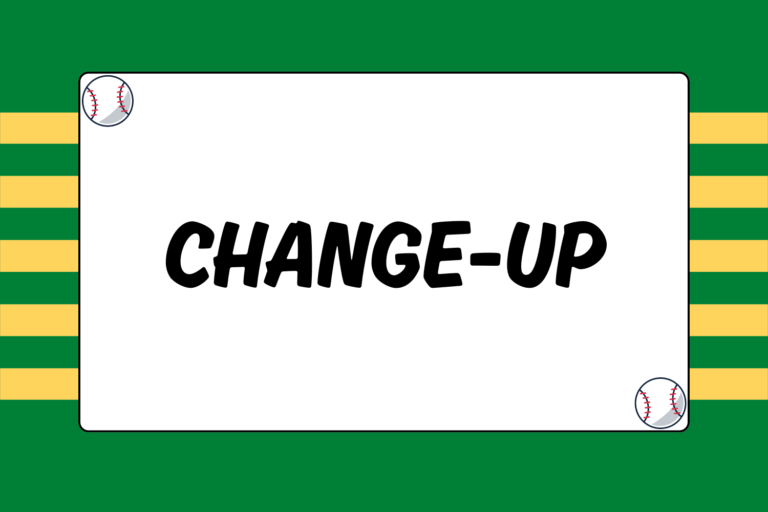Most levels of baseball allot a two-minute break between the end of one half-inning and the beginning of the next. This pause in the action exists so that the batters can retrieve their bats and helmets and prepare to hit, and so fielders can get to their positions and briefly loosen their arms. But most importantly, this time allows the pitcher to warm up.
One of the first lessons you have to learn as a pitcher is that you control the pace of the game. Ultimately, play will start when you’re ready. However, there are some restrictions in place to prevent games from lasting all day. Depending on your level of play, some umpires enforce these rules more strictly than others, but you can never assume you’ll get a lenient ump.
One key to having success on the mound, inning after inning, is to establish a warm-up routine. This guide explains the rules you need to follow and outlines the most effective ways to utilize your brief warm-up time between innings.
After the Inning
When you finish an inning and it’s your team’s turn to hit, you need to take a breather, keep your mind focused, and keep your arm loose. You should (almost) always wear a jacket in the dugout between innings unless you’re due up in the batting order.
Pitching puts a great deal of stress on your arm, and thus your body produces large quantities of lactic acid to keep your muscles energized. When you rest and cool down, that lactic acid accumulates in muscles in your shoulder, often causing stiffness. Further, as your pitch count climbs, it becomes increasingly difficult to prevent the muscles in your arm from tightening and/or becoming sore. Wearing a jacket prevents your arm from stiffening up when you’re not on the mound.
Some pitchers need to keep their arms moving in order to stay loose. If your team ends up batting for a long time (especially if the other team makes pitching changes), consider playing some light catch with a teammate to keep your arm warm.
Hot Tip: Ignore the Temp
Some pitchers only wear a jacket between innings when it’s particularly cold out. This is a dangerous habit. Of course, if it’s 95 degrees outside, you’ll probably be okay without a jacket. But just because you don’t feel cold doesn’t mean your muscles won’t tighten up. Once you’re in the heat of a game, it’s likely that you won’t feel cold regardless of the temperature. But your pitching shoulder can stiffen up between innings even in warm weather. Always play it safe, wear a jacket on the bench, and keep that arm loose!
Five Precious Pitches
If you’re the starting pitcher in the first inning, or if you enter the game as a reliever, you are allowed eight warm-up pitches. Each subsequent inning, that number is reduced to five pitches. These pitches are valuable — don’t waste them! Here are some tips for making the most of your five practice tosses:
Quick stretch:
Stretch your muscles quickly before you start your warm-up pitches. Your hamstrings, shoulder, forearm, and chest are most likely to tighten up when you pitch. Between-inning stretching is a good habit to develop in order to prevent injuries.
Don’t overthrow:
You can’t strike anyone out during warm-ups, and there are no bonuses for lighting up the radar gun. You don’t need to throw your practice tosses at maximum speed; use the time to warm up, not to show off. Your focus should be on getting loose and getting a feel for your pitches.
Establish the fastball:
Your fastball delivery serves as a blueprint for the rest of your pitches, so it’s important to establish command of that pitch before any other. Focus on locating your fastball and keeping the ball down. If this means you have to throw five fastballs, so be it.
Get a feel:
If you can, use two or three warm-up tosses to get a feel for your secondary pitches. Ideally, you want to be able to find the right release point on your breaking ball and/or the right arm action on your change-up.
Wind-up and stretch:
Too many pitchers make the mistake of throwing all their warm-ups from the wind-up. It’s possible that you’ll only throw one pitch in the entire inning from the wind-up, so you need to be comfortable in the stretch as well. (Not to mention, the majority of your high-stress pitches will be from the stretch). Take at least two practice pitches from the stretch. Your last warm-up pitch — the one the catcher throws down to second — should always be from the set position.
Glove Signals for Warm-up Pitches
If you’re new to baseball, you may have wondered about the significance of the glove movements a pitcher makes before each of his warm-up pitches. These motions are signs to the catcher of what pitch he is going to throw, and there are accepted standards for what pitch each motion signifies.
Fastball
Signal for a fastball by holding your glove with your fingers pointed down and your palm facing towards you. Then flick your glove upwards and towards the catcher.
Curveball
The sign for a curveball is almost the exact opposite of the fastball signal. Hold your glove with your fingers up and your palm facing towards you. Then flick your wrist downward so that the pocket of your glove is open towards the catcher.
Change-up
For a change-up, turn the palm of your glove to face the catcher and point your fingers up. Then, without rotating your wrist, pull your glove back towards your body.
Slider/Cutter
The glove motions for a slider and a cutter are essentially the same. If you happen to throw both pitches, you’ll have to talk to your catcher and tweak one of signals until the difference is noticeable. Start with your glove facing sideways and your fingers pointed towards the catcher, as if you were going to shake someone’s hand. Then move your glove sideways in the direction the pitch will break (to the left for righties; to the right for lefties), and open your palm towards home plate.
Splitter
Signal for a split-finger pitch by pointing the palm of your glove down and your fingers towards the catcher. Then flick your wrist downward so that your fingers point to the ground and the back of your hand faces the catcher.
Routine Leads to Consistency
Don’t treat your time between innings as a vacation from pitching. Your job is to stay focused and loose when you’re not on the mound. Be safe and diligent in protecting your throwing arm and keeping your muscles warm.
Pitching successfully inning after inning requires not only practice and training, but sustained mental focus. Establishing a warm-up routine and sticking to it is the most effective way to maintain that focus. You know your body better than anyone, so you have to figure out what works best for you. There’s a reason why so much of baseball is ritualistic. If you’re consistent in your warm-ups, you’ll be consistent during the game!





